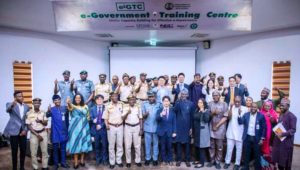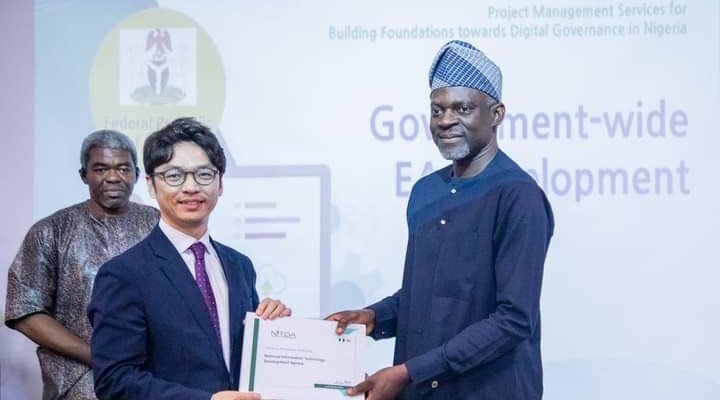
The National Information Technology Development Agency (NITDA) has unveiled the second phase of the Nigerian e-Government Master Plan, towards ensuring a seamless and inclusive access to digital services with the aim of enhancing transparency in government processes.
RELATED: Africa’s e-government efforts are bearing fruit
The Director General, National Information Technology Development Agency (NITDA), Kashifu Inuwa Abdullahi made this known recently at the handing over of deliverables to CEOs of NITDA, National Identity Management Commission (NIMC), Nigerian Immigration Service (NIS) and the Nigerian Customs Service (NCS) at the e-Government Training Centre in Abuja.
The event signifies the implementation of the first phase of the Nigerian e-Government masterplan, which was sponsored by the joint implementer, the Korean International Cooperation Agency (KOICA).
Abdullahi said that the aim of the event was to strengthen the progress made so far and properly position the general government enterprise architecture as a cornerstone of building the foundation for digital governance in Nigeria. Director IT Infrastructure Solutions in the agency, Mr. Oladejo Olawumi, represented him. He said under the Strategic Road map and Action Plan, which was named SRAP 2.0, the pillar of infrastructure in the project was committed to ensure seamless and inclusive access to digital services.
His words: “The enterprise architecture is a disciplined way of organising enterprise resources, which includes business processes, data, information, tech, finance, ETC, to provide the capabilities required to consistently achieve outcomes of the organisation’s functions and mandates.
“It specifies the principles, practices, standards, and policies that guide the way capabilities enable the IT to evolve over time and continue to deliver results even under continuous changes in political, administrative, and economic conditions.
“It is therefore in line with this administration’s commitment to ensuring the implementation of sustainable initiatives and programmes that will stimulate and rejuvenate the economy that the Federal Ministry of Communications
“Innovation and digital economy’s strategic plan of driving towards a resilient, inclusive and prosperous digital Nigeria by utilising ICT to drive transparency in government as well as improve the quality and cost-effectiveness of public service delivery in Nigeria.”
He also noted that NITDA had developed the Nigerian Government Enterprise Architecture as part of the implementation of the first phase of the Nigerian e-government master plan.
Adding: “The framework launched in March 2019 was developed as an overarching document to guide the effective and efficient adoption and implementation of IT projects in government so that expectations and outcomes of IT projects can be achieved in the short and long term.
“The implementation has led to the development of programmes and initiatives which include the clearing of many IT projects, improvement of the national IT clearance policy drive, IT systems and digital services assessment of 200 federal and public institutions, the Nigerian Government Enterprise Architecture portal, establishment of digital transformation technical working group DTTWG in 100 federal and public institutions, training of 442 members of the DTTWG and engagement of 10 FPIs under digital transformation performance and readiness.”
The Country Director, KOICA, Mr Songil Son said, “The project has four components, and the Enterprise Architecture is one of the components. NITDA is coordinating the whole process and so much progress has been made so far by properly positioning the overall government enterprises architecture as a cornerstone of building the foundation for digital governance in Nigeria.”
Earlier, representatives of Nigeria Customs Service, and Nigeria Immigration Service gave assurances that the services would be committed to leveraging the framework of the project as a catalyst for achieving the Nigeria’s strategic aspirations.































